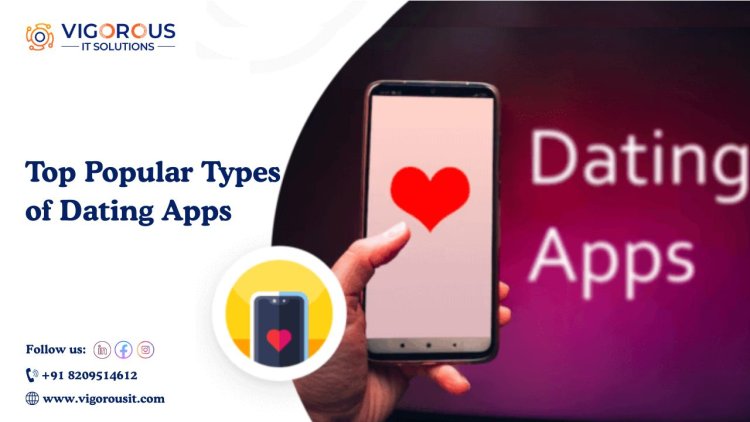Top Popular Types of Dating Apps
Dating apps come in various formats, each catering to different user needs and relationship goals. Here are the most popular types:
Share this Post to earn Money ( Upto ₹100 per 1000 Views )

Introduction:
Dating apps have redefined modern relationships by offering a convenient way for people to meet, connect, and build meaningful connections. With diverse relationship goals and user preferences, the dating app industry has evolved into multiple categories. Each type serves a unique purpose—whether it's a casual swipe, a serious commitment, or niche matchmaking. In this article, we’ll explore the five most popular types of dating apps and what makes each of them stand out in today’s digital landscape.
Top 5 Popular Types of Dating Apps and What Makes Them Unique
Dating apps come in various formats, each catering to different user needs and relationship goals. Here are the most popular types:
Read Also: How to Create a Dating App in 2025
1. Swipe-Based Dating Apps
Overview:
Swipe-based apps have become the face of modern dating. These apps rely on a gamified interface where users swipe right to like a profile and left to pass. When two users swipe right on each other, it results in a match, allowing them to chat.
Why They’re Popular:
Swipe apps like Tinder, Bumble, and Hinge are incredibly popular due to their simplicity, speed, and user-friendly design. They offer a low-commitment way to browse matches and have revolutionized dating with their “swipe culture.”
Best For:
Casual dating, short-term relationships, and discovering matches quickly.
2. Niche Dating Apps
Overview:
Niche dating apps are tailored to specific communities or interests. These platforms connect people who share similar backgrounds, lifestyles, or values. Examples include JSwipe (for Jewish singles), Christian Mingle, and FarmersOnly (for rural daters).
Why They’re Popular:
These apps create a sense of community and comfort by connecting users with common interests or identities. They reduce the noise of general platforms and increase the chance of compatible matches.
Best For:
Individuals seeking like-minded partners based on religion, lifestyle, profession, or hobbies.
3. Serious Relationship Apps
Overview:
Apps in this category are designed for users seeking long-term relationships and commitment. They typically feature detailed profiles and in-depth questionnaires to enhance matchmaking accuracy.
Why They’re Popular:
Apps like eHarmony and OkCupid focus on compatibility through data-driven matching algorithms. Users are more invested in finding a lasting relationship, leading to more thoughtful and meaningful interactions.
Best For:
Users are looking for serious relationships or marriage.
4. Social Discovery Apps
Overview:
These platforms go beyond romantic connections by also helping users make friends or professional connections. A great example is Bumble, which offers “Bumble BFF” and “Bumble Bizz” for non-romantic networking.
Why They’re Popular:
These apps are ideal for users who are new to a city or looking to expand their social circle. The versatility of these platforms makes them appealing for both dating and friendship.
Best For:
Making new friends, networking, and casual dating.
5. Location-Based Dating Apps
Overview:
Using real-time geolocation, these apps show potential matches who are physically nearby. Apps like Happn connect users who have crossed paths recently.
Why They’re Popular:
They create a sense of immediacy and relevance. By matching users based on physical proximity, these apps are excellent for spontaneous meetups or local dating.
Best For:
Users are looking to date within their immediate area or while traveling.
Learn more: Top Dating Apps Like Tinder
Conclusion:
The world of dating apps is more diverse than ever. Whether you're searching for love, friendship, or casual fun, there's a dating app designed to meet your needs. Understanding the differences between these popular types can help you choose the platform that best aligns with your goals and preferences.
Read more: What Is Tinder and How Does It Work?















